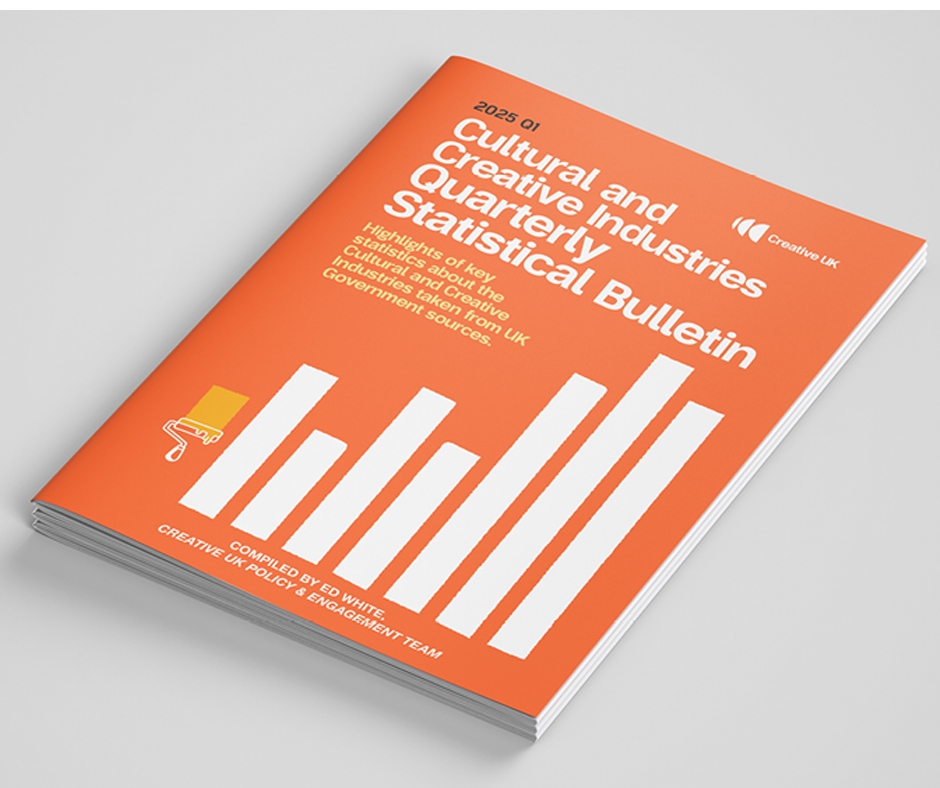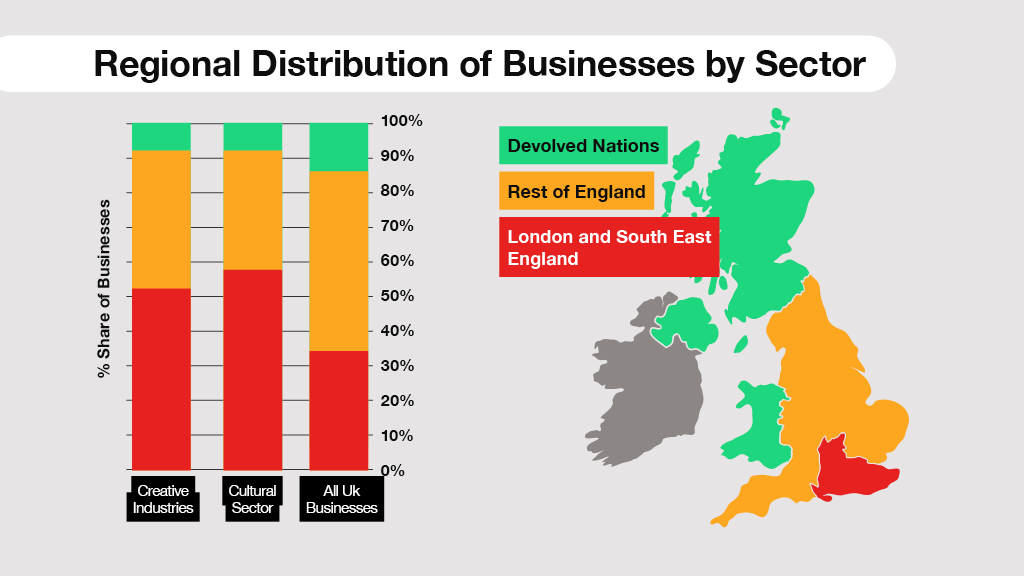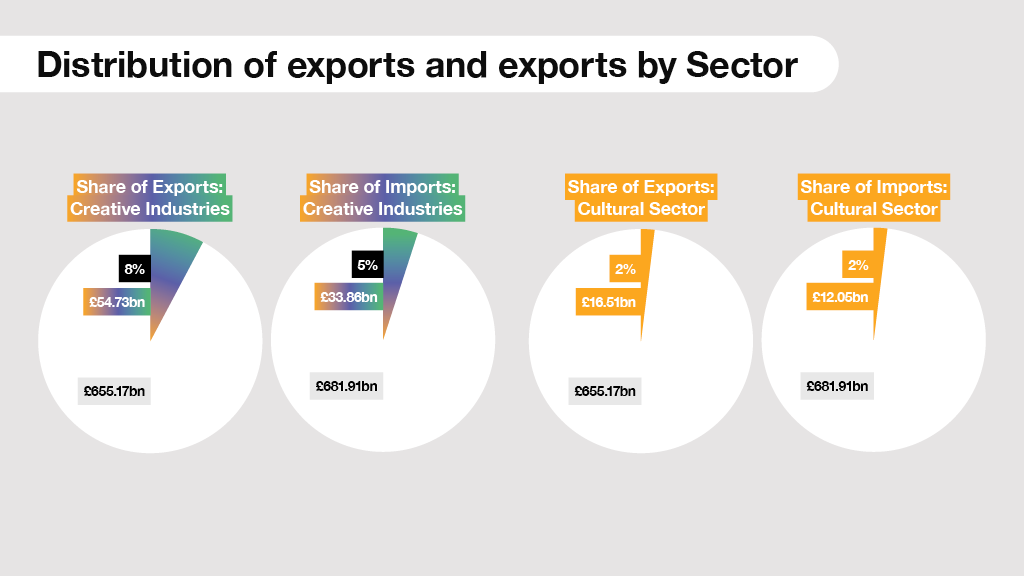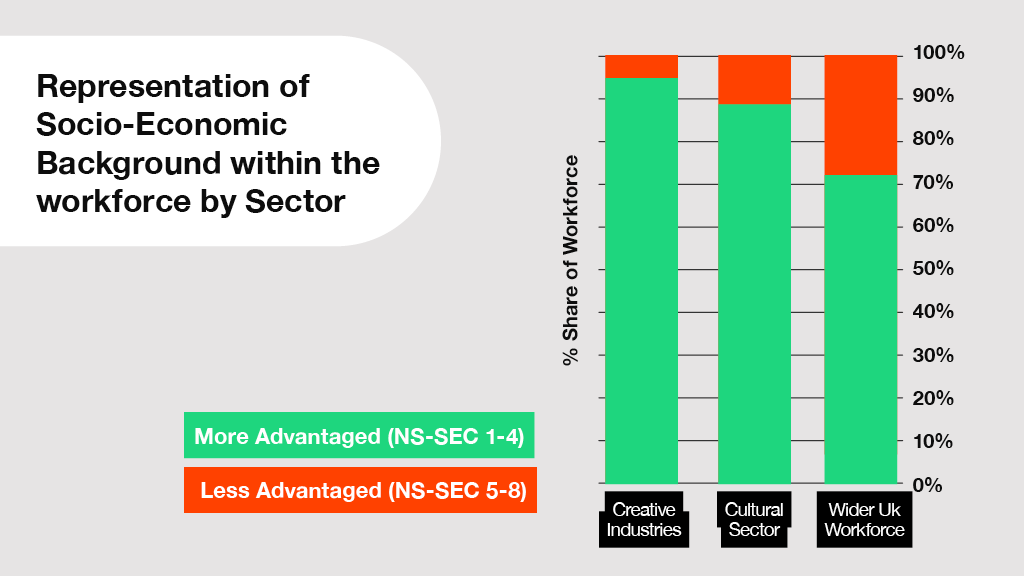
We know that the economic contribution of the creative industries is significant – and growing all the time.
At Creative UK, we are committed to monitoring the sector’s impact and making the data easier to access, understand and use for our network – so that we can keep advocating for more investment in creativity, and championing the work of our extraordinary members and partners.
As part of this, our Policy team has created our new Quarterly Statistical Bulletin, a valuable resource that collates up-to-date figures in one place – helping our members to quickly find the evidence they need to advocate for the recognition they deserve.
The full report is designed exclusively for our members who can download it from our members portal.
In this blog we pull out some of the most compelling statistics from the cultural and creative industries that have been compiled in the bulletin. Read on to get a flavour of the stories coming out of the creative industries, as told by the data.
To find out more about becoming a member, visit our sign-up page.
Scroll for a round-up of some of those statistics from across all creative sub-sectors.
Creating Growth
- The GVA of the Creative Industries was estimated at £123.03bn (or 5.37% of total UK GVA) between January 2024 and December 2024.
- The GVA of the Cultural Sector was estimated at £32.97bn (or 1.44% of total UK GVA) in the same period.
Source: GVA (gross value added to the UK economy) for the Cultural and Creative Industries | Source: DCMS Economic Estimates: Monthly GVA (to December 2024)
Creative businesses across the UK in 2024
- In 2024, there 268,080 Creative Industries businesses in the UK, the equivalent of 9.84% of all UK businesses.
- There were 140,815 creative businesses in London and South East England (or 52.53% of all creative businesses).
- There were 106,640 creative businesses in England outside of London and South East England (or 39.78% of all creative businesses).
Sources:
Overall number of Creative and Cultural businesses in the UK | Source: ONS IDBR (Inter-Departmental Business Register) Activity, Size and Location (March 2024 Cut)
Number of creative businesses in the UK by region | Source: ONS IDBR (InterDepartmental Business Register) Activity, Size and Location (March 2024 Cut)
Exports
- In 2021, the Creative Industries registered a net export figure of £20.87bn.
- In 2021, the Creative Industries made a total of £54.73bn of exports, or 8.35% of total UK exports. » This figure includes £9.14bn in goods (or 16.70% of Creative exports) and £45.59bn in services (or 83.30% of Creative exports).
Source: Creative Industries Trade (Goods and Services, 2021) | Sources: DCMS and digital sector economic estimates: Trade (2021)
Our Talent
The Cultural and Creative Industries are a diverse workforce, with a higher proportion of self-employed workers compared to the wider UK workforce. Despite recording higher than average median hourly earnings, the sectors have greater pay inequality across all demographic markers.
- From July 2023 to June 2024, the Creative Industries employed 2.40m workers (or 7.06% of the UK workforce).
- In the same period, the cultural sector employed 695,000 workers (or 2.04% of the UK workforce.
Source: Employment within the Creative and Cultural Industries (including self-employment) | Source: Economic Estimates: Employment in DCMS sectors (July 2023 to June 2024)
Representation of socioeconomic groups
- For the Creative Industries: » The current occupation of 2.27m workers (or 94.61% of the Creative workforce) is in a more advantaged socio-economic group.*
- For the Creative Industries: » The current occupation of 129,000 workers (or 5.39% of the Creative workforce) is in a less advantaged socioeconomic group.
- For the Cultural Sector: » The current occupation of 614,000 workers (or 88.43% of the Cultural workforce) is in a more advantaged socio-economic group.
- For the Cultural Sector:» The current occupation of 80,000 workers (or 11.57% of the Cultural workforce) is in a less advantaged socioeconomic group.
Source: Demographic representation within employment across the Creative and Cultural Industries | Source: Economic Estimates: Employment in DCMS sectors (July 2023 to June 2024)
*More advantaged socio-economic groups are defined as 1-4 on the National Statistics Socio-Economic Classification scale; less advantaged socio-economic groups are defined as 5-8 on the same scale. ONS (No Date) The National Statistics Socio-economic classification (NS-SEC). Available at: https://www.ons.gov.uk/methodology/ classificationsandstandards/otherclassifications/ thenationalstatisticssocioeconomicclassificationnssecrebasedonsoc2010
The full version of our quarterly statistics bulletin on the creative and cultural industries is available for Creative UK members. To learn more about joining Creative UK membership, visit our sign-up page.
Related stories




